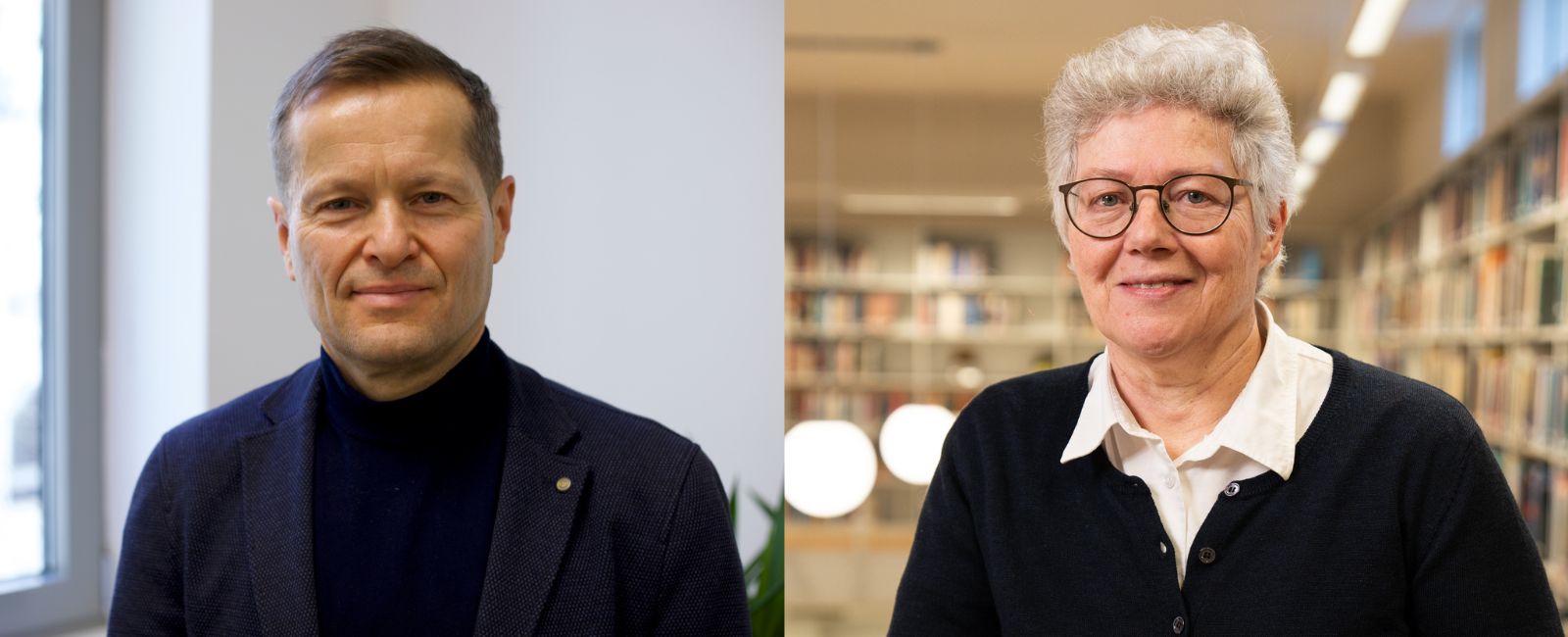
The Nobel Prize in Physics has gone to Ferenc Krausz and Anne L’Huillier, Frontiers of Knowledge laureates in 2023
Ferenc Krausz and Anne L’Huillier, winners of the 15th BBVA Foundation Frontiers of Knowledge Award in Basic Sciences jointly with Paul Corkum, were announced today as co-winners with Pierre Agostini of the 2023 Nobel Prize in Physics. The committee of the Royal Swedish Academy of Sciences awarded them the prize for the generation of attosecond pulses of light enabling the study of electron motion in matter.
3 October, 2023
Krausz (Mór, Hungary, 1962) and L’Huillier (Paris, France, 1958) share the Nobel Prize in Physics with Pierre Agostini “for experimental methods that generate attosecond pulses of light for the study of electron dynamics in matter,” in the word of the Nobel committee. These experiments, it said, “have given humanity new tools for exploring the world of electrons inside atoms and molecules.”
In 2023, L’Huillier (Lund University, Sweden), and Krausz (Max Planck Institute of Quantum Optics, Germany) were joint winners with Paul Corkum of the BBVA Foundation Frontiers of Knowledge Award in Basic Sciences. The awardees, said the Frontiers committee, “have shown how to observe and control the motion of electrons in atoms, molecules, and solids with ultrashort light pulses on time scales of about one hundred attoseconds. One attosecond is approximately the time for light to travel across an atom and is the natural scale for electronic motion in matter. This time scale was previously inaccessible to experimental studies due to the lack of light pulses with short enough duration.”
Thanks to attophysics, scientists can now directly observe natural processes that were once off-limits to the human eye. “These groundbreaking contributions have opened exciting new frontiers in different areas, including atomic physics, photochemistry, and materials science,” concluded the Frontiers Award citation.
Two foundational experiments
In 1987, Anne L’Huillier launched the attophysics field with her discovery that atoms subjected to short, intense laser pulses of infrared light emitted a whole range of X-ray harmonics. With these harmonics, the then postdoc researcher had achieved the highest frequency ever recorded through the interaction of laser light pulses with matter.
A few years later, Ferenc Krausz, working with Corkum, decided to build on this discovery to create the shortest light flashes ever attempted. The light waves generated by L’Huillier were the ideal candidate for the task, as they oscillated at such high frequencies that they emitted light pulses of a few attoseconds duration.
Krausz’s fundamental contribution was to successfully isolate these pulses so they could be emitted one by one. The experiment with which he first achieved this, whose results were published in 2001, is considered to mark the birth of experimental attophysics. As well as opening the door to detailed observation of electron motion, it was able to corroborate a series of predictions formulated decades back by theoretical physics which had previously been inaccessible to testing in the lab. One such prediction is the tunnel effect, whereby an electron is able to pass through a barrier which, in theory, it does not have the energy to surmount.
The scientific and medical potential of attosecond pulses
Now both L’Huillier and Krausz are keen to use the insights provided by attosecond physics to delve deeper into the behavior of matter and possibly even develop biomedical applications. L’Huillier wishes to probe more closely into processes like entanglement, one of the most surprising features of quantum mechanics whereby two separate particles, perhaps even kilometers apart, display a shared behavior that cannot be accounted for by classical physics.
Krausz, meantime, has begun exploring the biomedical potential of attosecond pulses to analyze blood samples with unprecedented precision. The experimental measurements obtained to date may, he believes, be of value in future for the early diagnosis of multiple conditions.
25 Frontiers awardees have gone on to win the Nobel Prize
The award of the Nobel in Physics to Anne L’Huillier and Ferenc Krausz makes a total of 25 Frontiers of Knowledge laureates that have later won the Nobel Prize.
Ten Frontiers laureates went on to receive the Nobel Prize in Economics: Lars Peter Hansen (2013), Jean Tirole (2014), Angus Deaton (2015), William Nordhaus (2018), Abhijit Banerjee and Esther Duflo (2019), Paul Milgrom and Robert Wilson (2020), David Card (2021) and Ben Bernanke (2022).
In the case of the Nobel Prize in Medicine, six Frontiers laureates were subsequently distinguished by the Swedish Academy: Shinya Yamanaka (2011), James P. Allison (2018), David Julius and Ardem Patapoutian (2021), and Katalin Karikó and Drew Weissman (2023).
The Nobel Prize in Physics found its way to six previous Frontiers awardees: Didier Queloz and Michel G. E. Mayor (2019), Klaus Hasselman and Syukuru Manabe (2021), and Ferenc Krausz and Anne L’Huillier.
Finally, in the case of the Chemistry Nobel, the Swedish Academy recognized the work of Frontiers awardees Robert J. Lefkowitz in 2012, and Emmanuelle Charpentier and Jennifer Doudna in 2020.

